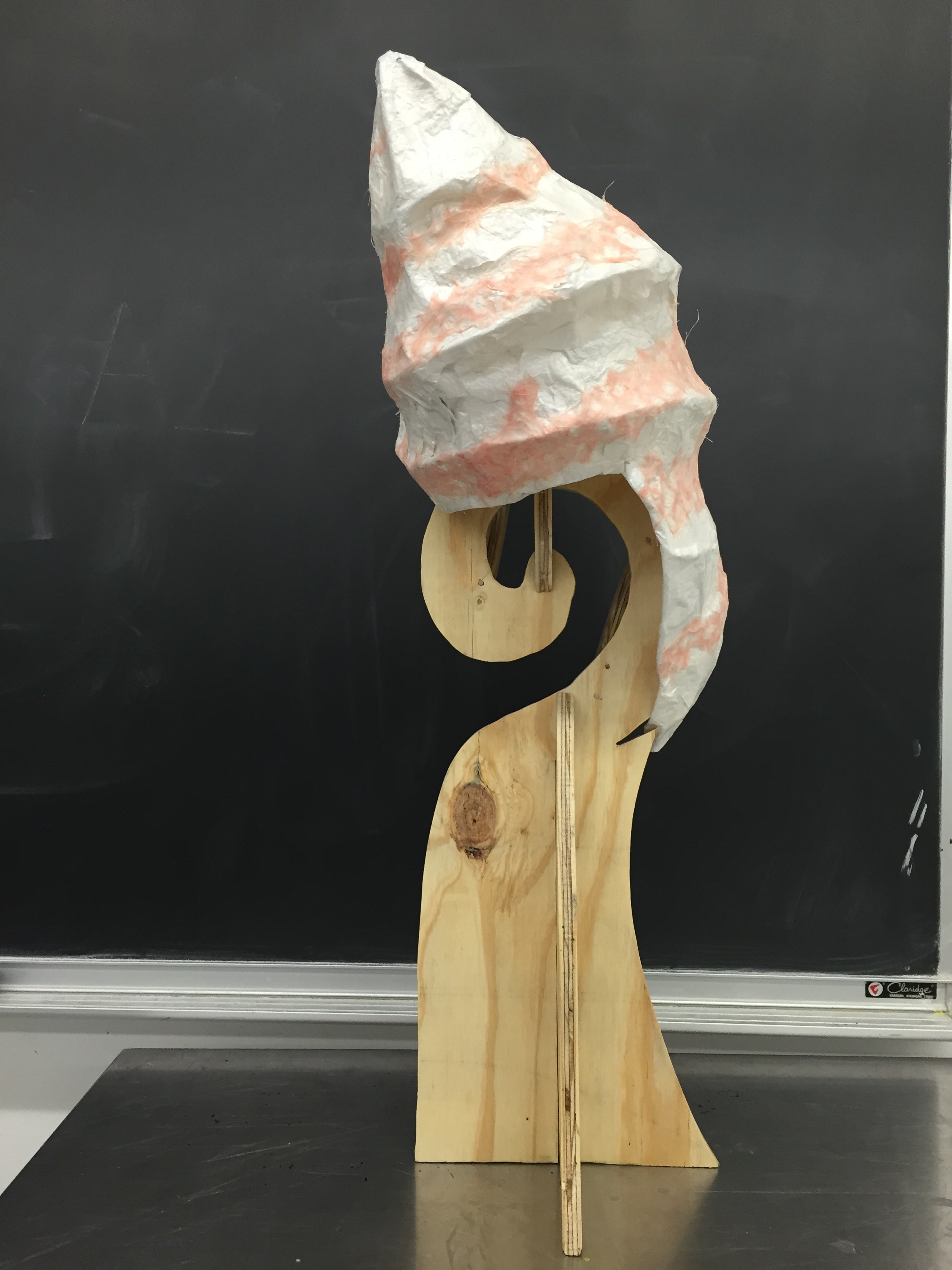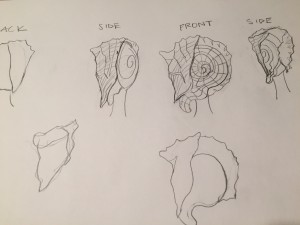Inspiration Resources:
For this project, my inspirations included masks from varied cultures in history. While each of these masks is from a different era, each has an organic feeling. I chose the sight of sound as the basis for my mask. This idea immediately reminded me of putting my ear up to a seashell and “listening to the ocean”. I have a strong memory of doing this as a child and I think that it translates through the mask. Because of this idea, I searched for inspiration with organic materials such as shell itself. The image on the right is made of mosaic shells. The image in the middle is made of driftwood, inspiring me to keep the raw texture of the wood for my mask stand. The image on the right has organic curved lines that inspired the twisty shell shape that I created in my mask using wire.
Initial Sketching:
My initial idea for this mask was to create an all encompassing shell that curved around the entire face, however, I changed the mask to wrap around only the front left half of the face because it logistically needed room to fit over a head or the masks stand. I drew my sketches in lines so as to mimic the way I would construct the mask with wire.
Mask in Progress:
I started out with the wire by creating two circles that intertwined for a structural frame. After working with this, I realized the circle that framed the face was in the negative space that the shell should not be covering the face, so I restarted the frame by created bigger and smaller circles for the curves of the shell. I used longer piece of wire to connect these circles and create a wavery effect to mimic the shell’s shape. I also used the small wire for structure by wrapping it spirally around each piece of thicker wire to create the spiral shell shape as well.
Mask covered in linear material:
I chose two different papers as my linear materials to cover the wire frame. The pearlescent white paper represents the pearly sheen of the shell and the pink paper with holes has the raw and organic aspect and adds the pinkish hue to the shell. It also further follows the spiral shape of the shell’s facade. I used glue and water to create a paper mache effect in order to cover the wire frame. This was difficult because the paper was not sticking at first, but the more I added paper, the better it stuck to itself. I covered both the inside and outside smoothly.
Foam Core Model of Mask Stand:
I wanted to incorporate the shape of the cochlea inside of an ear into the piece because it mimics the spiral shape of the shell and connects to hearing. I kept the mask minimalistic by deciding not to include it, but was able to use it as the shape of the mask stand. I made the model out of foam core and followed the spiral shape, including negative space. After viewing the model from the side, however, the mask had less dimension that I hoped for, so I added curved pieces to stick out and push the 3d aspect of this shape.
Mask stand made of final linear material:
I used plywood for my final material because it represents driftwood with its raw aesthetic. I traced my foam core pieces onto the wood and cut the pieces using various shapes. I made the slotting in the main piece of the model longer so the stand would stay up stably. I also added a slit for the mask to connect into and used pegging to add the curved pieces on the sides. I sanded the wood to get rid of pencil marks and varnished it with a clear varnish to finish it and keep it intact. When I drilled one of the small curved pieces onto the side, the piece broke, so I used sawdust and wood glue to create wood putty and fill in the hole. This was effective in solving the problem. The mask stand equally adds to the sense of hearing and pushes the meaning of the mask.
Final Mask:


















